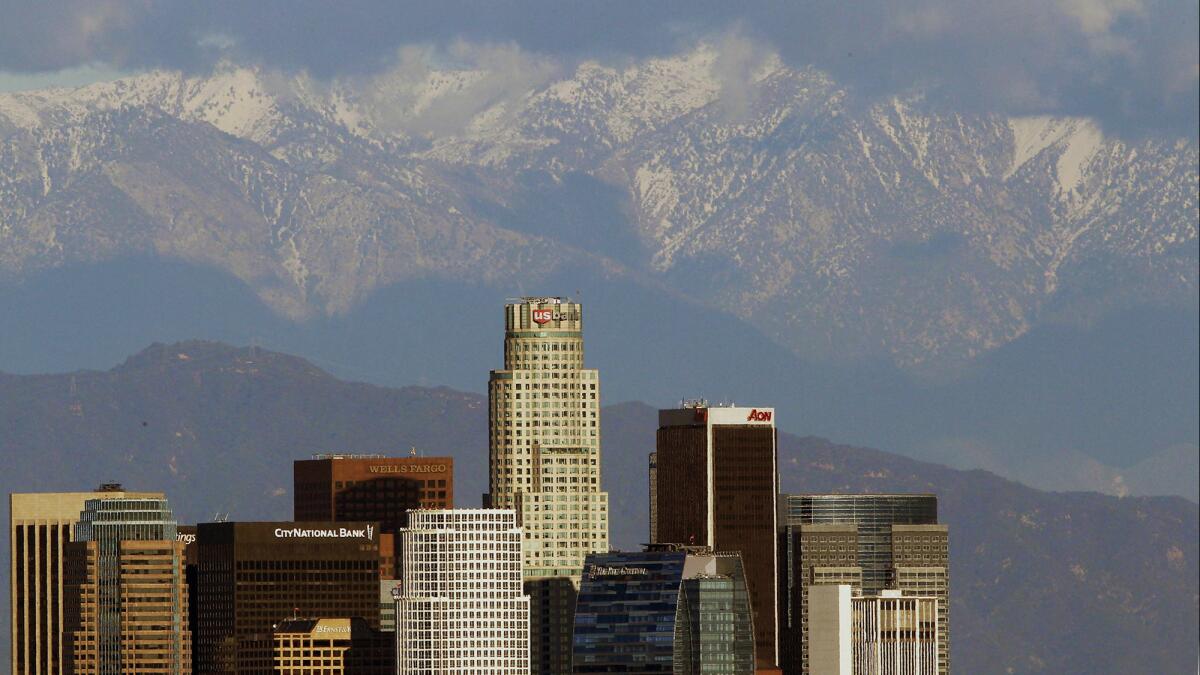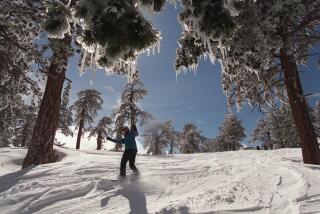Past and present meet in L.A.’s uncertain wilderness

Southern California had its chance. In 1930, two of the country’s most esteemed landscape and planning firms presented a blueprint for what would have created, in the words of this newspaper, “the finest outdoor recreation system in America.”
The plan — a necklace of parks, parkways, playgrounds and public beaches — would have stretched nearly 440 miles from Malibu to Long Beach, from the Angeles National Forest to Bolsa Chica, and pushed back the momentum of development that was quickly transforming this flood plain by the sea.
Critics paled at its cost. They declaimed its broad and excessive reach, and the proposal was soon buried and ignored.
What Los Angeles failed to do in 1930, President Obama will do Friday. By turning the San Gabriel Mountains into a national monument, he not only helps preserve this ragged line of peaks and steep canyons of chaparral, but he also dignifies one of the region’s most overlooked treasures, this hazy scrim rising so abruptly along the northern reaches of the city.
For some, these mountains may not be easy to love, more nemesis than tonic. In winter, they turn to mud. In summer, they bake, and in the fall, they burn. Nor are they the state’s most spectacular range; that honor must fall to the Sierra.
Yet still the San Gabriels define our lives with their imperfect beauty. Nonnative plants, pockets of graffiti and scatterings of trash might overshadow any quick appreciation, but its trails are not without their allure. Just ask any Angeleno who has spent a day climbing Mt. Baldy or biking a remote fire break.
The Arroyo Seco, a narrowing defile just north of the Jet Propulsion Laboratory campus, is one of the San Gabriels’ most majestic canyons. Within a half-hour of a parking lot lie groves of white alder, canyon oak, sycamore and eucalyptus. It is an invitation to reverie, which might be cut short by the clip, whir, shouts and footfalls of mountain bikers, runners, equestrians and dogs charging past.
Here past and present meet in a wilderness of uncertain proportions. Just beyond the first bridge — the one with balusters — is a small meadow, shaded by oaks and dotted by Spanish sabers. Hidden in the underbrush is a small monument bearing the words “Pasadena Hunt Club” with an inscription, “Presented by Edmund Dockett.” It is almost a century old.
Angelenos often define themselves by the city they inherited, the massive achievement of concrete and asphalt, and it is easy to forget that these mountains and trails were once considered a vital part of this region’s identity. Who Edmund Dockett was is a mystery today, but his presence is a reminder of our common legacy.
We often see Los Angeles at odds with its natural world. We fight for access to our beaches. We lobby for master plans that will preserve wetlands. We struggle to fund the reclamation of a river from a concrete wash. And we take nature as it comes: a coyote on a golf course, a bear in a swimming pool, a songbird alighting on a sycamore outside a downtown office building.
The new monument is a chance to set this right, a chance for us to understand and appreciate what lies just within reach of this city, a civic network of roads and trails as grand and important to the life of this city as any of its artistic, cultural or sporting institutions. Privileged to have the Getty Center, Los Angeles County Museum of Art, the Walt Disney Concert Hall and Staples Center, we are no less fortunate for the unpaved world that surrounds us.
Coming to the San Gabriels today, to the brusque topography of these mountains as they lift above the welter, we add a new dimension to our identity, a dimension that has always been there but that we have denied, ignored and disputed.
A great enthusiast of these mountains, Will Thrall, who wrote a hiking column for this paper in the 1930s, believed that there was “nothing which gives so much of living for so little in cost, as hiking our mountains and hill trails and sleeping under the stars.”
At the time, such pronouncements were easy. The city was flush with what historians call the Great Hiking Era. Perhaps such forgotten dreams can be revisited.
These mountains will always be our dreamscape, rooted in an experience of Southern California, where we can realize at last the promise of the past.
Twitter: @tcurwen
More to Read
Start your day right
Sign up for Essential California for news, features and recommendations from the L.A. Times and beyond in your inbox six days a week.
You may occasionally receive promotional content from the Los Angeles Times.







